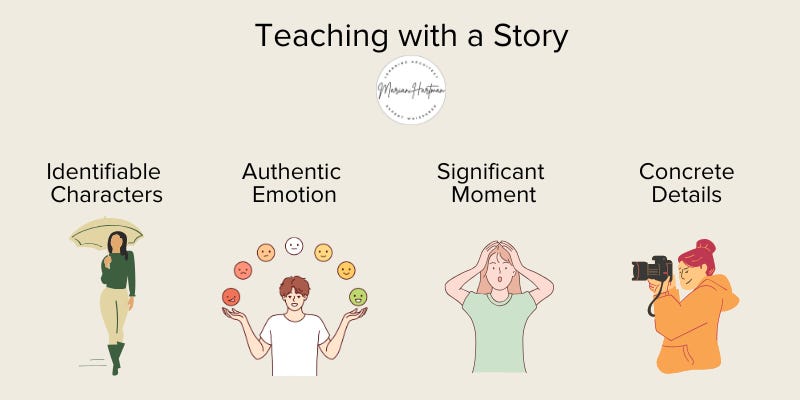Creating Stories Reliably
The Green Path - Inspired Block Series
This month has been focused successfully starting people on the Green Path of skill acquisition. This first block is all about the ‘aha’ moment … there is a connection point to what they understand from their own experience and this new skill. However, we have to facilitate that ‘aha’ moment. Fortunately, there is a science behind the magic.
One of the best ways to hot wire the brain is through visuals. There are several different types of visuals; each serving a different purpose. We’ve looked at reasons and ways we’d look at each major type of visual, including Relationship Diagram, Complex Model, and Metaphor.
Now we’re going to peek behind the Green Curtain at the Story artifact!
To be honest, the Story artifact is less about visual and more about a bridge that is closing a gap. I include it as a visual though, because it fulfills the same function as the other three visual artifacts.
When to use Story
Stories are the most powerful visual to address resistance, especially unconscious resistance. For example, use a story if potential learners are habitually performing a task the incorrect way and you’re trying to shift that default.
How to teach with Story
Select a story far enough away from the current context that they can recognize the lesson. Children’s stories, fairy tales, fables, parables, and myths are all great sources where you’ll easily find parallels to your goals.
The goal is to help the learner see parallels between a well-known story and their current situation so that they easily see the parallel between the story and their situation. To enable that, a story needs 4 elements, which includes an identifiable character, the authentic emotion, the significant moment that caused change, and enough concrete detail to make it relatable.
Another version of teaching with a Story artifact is a real world story told by the individual who experienced it. This requires the same four elements. Generalizations or emotion-free versions of the story will not work.
The goal for this strategy is to bridge a skeptic towards the new belief. Hearing a story of a skeptic and their journey of change can open curiousity for other skeptics.
A myth story begins with a grand purpose and then builds a bridge that reaches back to where the listener is now. In contrast, a real-world story starts right where the listener stands, laying a bridge forward toward what’s possible.




